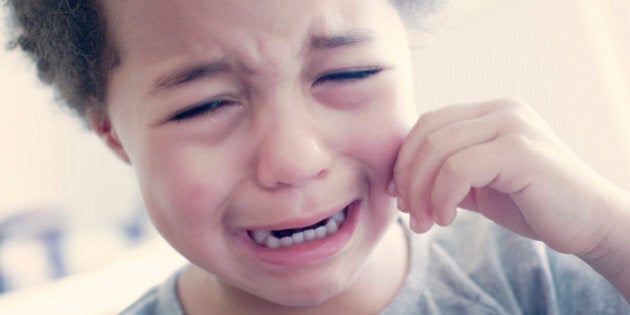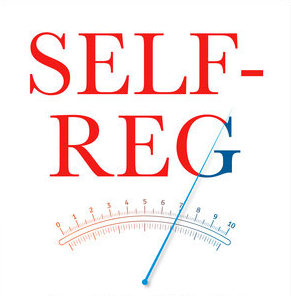

Control yourself!
Behave!
Try harder!
None of us are at our best when we’re tired or stressed out, especially kids. In fact, much of what we see as “misbehaviour” in kids is actually “stress behaviour” ― the result of being over-stressed, unaware of it and unaware of what to do about it.
Think of the child who is highly impulsive, has frequent tantrums or meltdowns, won’t listen, can’t tolerate frustration, gives up easily, or has trouble managing relationships or showing empathy. Behaviours that trigger our automatic thought that a child is “bad” or “lazy” or “undisciplined” are often a sign that their stress level is way too high and they’re running on empty ― with no energy left to manage anything else.
Every child struggles with big feelings, impulses and troublesome behaviours at times, but lecturing them to show more self-control misses the mark. In fact, the more we focus on self-control and the harder we push for it, the harder self-control and positive behavioural change can become. Instead, we need to recognize when our child’s “problematic” behaviours are really a form of stress behaviour: a critical sign that their stress load needs to be reduced.
In other words, we have to recognize the fundamental importance of self-regulation: responding effectively to stress and then recovering from the energy expended. Self-regulation is pivotal for well-being and positive behavioural change: not just for children and youth, but parents as well! What’s most exciting is that our capacity to self-regulate is something that all of us can work on with lifelong benefits to improve mood, attention, learning and healthy habits.
“Stress depletes your child’s energy for other important tasks like paying attention and learning, but especially managing strong feelings.”
Stress behaviour reflects a child’s difficulty managing stress. A child’s problem behaviours are critical signs that the brain’s rational prefrontal cortex is under too much stress and the more primitive “fight-or-flight” limbic system has taken charge. When this happens the slightest provocation can set them off, and they see the world, themselves and others in highly negative terms. They become prone to fearful or angry reactions, irritable or easily frustrated, driven to seek temporary relief, even when that behaviour only makes matters worse. (The same goes for all of us.)
Stressors come from a wide range of sources: physical, emotional, cognitive, and social. Hidden stressors may include being yelled at, an angry facial expression, a lack of sleep, poor nutrition, illness, or too little exercise; sensory or learning difficulties; friendship problems or worries about school.
Stressors also include having to deal with other people’s strong emotions or being asked to put the needs of others ahead of one’s own. Every time we experience a stressor we have to burn a bit of energy to keep all our internal systems running smoothly. Stress depletes your child’s energy for other important tasks like paying attention and learning, but especially managing strong feelings.
In my new book SELF-REG, you learn to read your child’s signs and understand the significance of your child’s behaviours, to identify stressors and reduce them, and to engage your child in this process of self-awareness rather than trying to suppress or control what he is thinking, feeling or doing. You’ll help your child experience what “calm” feels like and learn how to access or create that state when he feels the need.
These five SELF-REG steps will become second nature to you:
1. Reframe the behaviour
Read your child’s stress signs to understand the meaning of behaviours that you would otherwise only find annoying or worrisome. See those behaviours as signs that your child may be over-stressed and needs your help. Respond calmly and empathetically to create the caring connection your child needs to feel safe, calm, and ready to connect.
2. Identify your child’s stressors
Ask “Why now?” Excessive homework, social worries and over-packed schedules are obvious stressors for kids. But hidden stressors take a big toll, too. Noise, too much or too little light, visual clutter, crowds, and transitions can be significant stressors for kids. Learning difficulties or health problems drain their energy. Other common stressors include smells, textures, sitting or standing, and waiting. Even something fun ― a play date or party ― can demand a lot from your child. Has it been a busy or demanding day? Is your child short on sleep, eating poorly, worried, or feeling out of sorts? Any of these can deplete the energy your child needs to self-regulate now.
3. Reduce the stress
Once you’ve identified sources of stress for your child, do what you can to dial them down. Simple changes can make a big difference in your child’s stress load and energy available to manage everything else. Create a calming “safe haven” environment at home. Make sure your child gets enough sleep, wholesome foods, playtime and exercise. Talk with your child’s teachers about how to reduce stress around learning and social interaction at school.
4. Help your child develop self-awareness about what stresses them and the signs that they’re feeling stressed
In everyday ways, from the earliest age, engage your child in calming activity so he can experience what “calm” feels like, learn to enjoy it and seek it out, and develop an awareness of his own inner state and the physical and emotional signs of mounting stress.
5. Discover together what helps your child ‘reset the stress button’ to de-stress and feel calm
Develop strategies to reduce tension and replenish energy. What one person finds calming may have the opposite effect on another. What works for you may not work for your child. What works one day may not work the next. That’s what makes the first four SELF-REG steps so important to empower the fifth: once we learn to recognize signs of stress, we can find more effective ways to respond ― to our child, ourselves and those around us. And we can teach our child how to do SELF-REG for himself.
SELF-REG strategies are by nature adaptive ― of lasting impact and value ― because they focus on bringing your natural systems for self-regulation into balance and help you keep them that way. There are many options for stress awareness and relaxation practices. What’s most important is that you help your child find the right fit.
Have a personal story you’d like to share on HuffPost Canada? You can find more information here on how to pitch and contact us.
MORE ON HUFFPOST:
Also on HuffPost:
